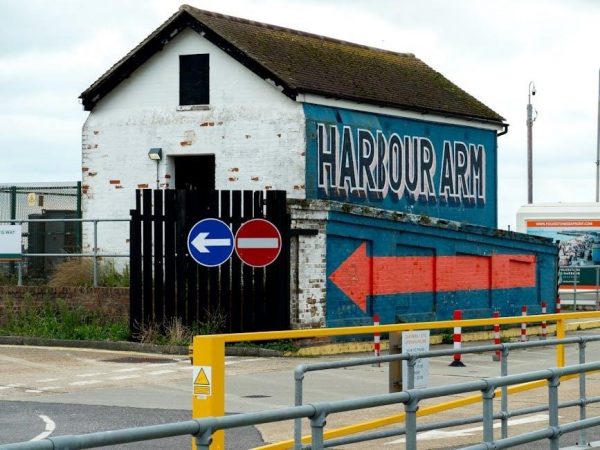Midwestern conversation is a unique blend of humor, politeness, and regional pride. From phrases like “I didn’t really care for it” to “You betcha,” it reflects a cultural identity rooted in kindness and subtlety; Understanding these quirks is key to connecting with Midwesterners.
What Makes Midwestern Conversation Unique
Midwestern conversation is defined by its blend of humor, politeness, and subtle indirectness. Phrases like “I didn’t really care for it” or “You betcha” reveal a culture of understatement and kindness. The Midwest’s conversational style often avoids confrontation, favoring passive-aggressive politeness instead. Regional pride shines through in discussions about sports, local traditions, and even home features like finished basements. Humor plays a significant role, often self-deprecating, to diffuse tension. This unique mix of friendliness and subtlety creates a conversational style that feels distinctly Midwestern, balancing warmth with a reserved, down-to-earth demeanor.
The Importance of Understanding Midwestern Slang and Phrases
Understanding Midwestern slang and phrases is crucial for connecting with locals. Terms like “ope” or “You betcha” carry cultural weight, reflecting values of politeness and community. Grasping these expressions helps bridge gaps between outsiders and Midwesterners, fostering mutual understanding. It also reveals the region’s humor and self-deprecation, essential for building rapport. Without this knowledge, conversations might feel distant or misinterpreted. Learning these phrases isn’t just about language—it’s about embracing the Midwest’s unique identity and way of life, making interactions more authentic and meaningful.
Cultural Context of Midwestern Conversation
Midwestern conversation is deeply rooted in hospitality, humor, and regional pride. It reflects a culture of kindness, subtle humor, and community, shaping how people interact and connect.
Midwestern Politeness and Hospitality
Midwestern politeness is legendary, often expressed through offers of help or food. Phrases like “Can I get you something?” reflect a deep-rooted desire to ensure others feel comfortable. Hospitality is a cornerstone, with Midwesterners often going out of their way to accommodate guests. This politeness can sometimes be passive-aggressive, masking true feelings behind a courteous facade. For instance, a host might insist “Make yourself at home” while subtly managing the environment. Such behaviors highlight the region’s emphasis on harmony and avoiding confrontation, creating a unique balance of warmth and restraint in social interactions.
The Role of Humor in Midwestern Dialogue
Humor plays a central role in Midwestern conversation, often serving as a way to connect and diffuse tension. Self-deprecating jokes and light-hearted teasing are common, reflecting the region’s modesty and reluctance to take oneself too seriously. Phrases like “Oh, for Pete’s sake” or “You betcha” are delivered with a wink, blending humor with sincerity. Midwesterners frequently use humor to avoid confrontation, making difficult conversations more palatable. This approachable, down-to-earth style of humor not only fosters camaraderie but also reinforces the region’s values of humility and community, creating a unique and relatable communication style.
Regional Pride and Identity
Midwesterners take immense pride in their regional identity, often expressing it through local traditions and shared experiences. Conversations frequently highlight the Midwest’s heartland values, such as hard work and hospitality. Phrases like “It’s got a finished basement” or “The garage fridge” reflect pride in modest, practical living. Sports rivalries and state-specific expressions further emphasize regional loyalty. This pride is celebrated with humor, as seen in Taylor Kay Phillips’ A Guide to Midwestern Conversation, which affectionately portrays the Midwest’s quirks. The region’s identity is deeply rooted in community and a no-frills approach to life, fostering a strong sense of belonging among Midwesterners.
Common Midwestern Phrases and Their Meanings
Midwestern conversation is filled with unique phrases like “I didn’t really care for it” (expressing dislike politely) and “You betcha” (a strong affirmation). These phrases reflect the region’s charm and humor, offering insights into its cultural nuances and everyday communication style.
“I Didn’t Really Care for It” – Expressing Dislike Politely
In Midwestern conversation, directness is often softened by politeness. The phrase “I didn’t really care for it” is a classic example of this subtlety. It serves as a gentle way to express dislike without offending others. For instance, when asked about a meal or an event, this phrase conveys dissatisfaction subtly. It reflects the Midwestern value of avoiding confrontation and maintaining harmony. This approach to communication is deeply rooted in the region’s culture of kindness and indirectness, making it a hallmark of Midwestern dialogue. Mastering such phrases helps non-Midwesterners navigate social interactions with ease and understanding.
“You Betcha” – The Ultimate Midwestern Affirmation
“You betcha” is a quintessential Midwestern expression that embodies the region’s friendly and affirming communication style. It serves as a strong affirmation, equivalent to “you bet” or “absolutely,” but with a uniquely Midwestern flair. Often used in casual conversations, it conveys agreement, enthusiasm, or confirmation. For example, responding to “Want to grab a beer?” with “You betcha!” signals eagerness and camaraderie. This phrase reflects the Midwestern values of approachability and positivity, making it a staple in everyday dialogue. It’s a simple yet powerful way to connect and show solidarity, highlighting the region’s warm and welcoming nature.
“Oh, for Pete’s Sake” – Expressions of Frustration
“Oh, for Pete’s sake” is a classic Midwestern expression used to convey mild frustration or exasperation. It’s often employed in everyday situations, like when someone is being stubborn or overly particular. For instance, a Midwesterner might say, “Oh, for Pete’s sake, it’s just a parking spot!” to express annoyance without being overly confrontational. This phrase reflects the region’s tendency to avoid direct conflict, instead opting for a more lighthearted or humorous approach to frustration. It’s a relatable and endearing part of Midwestern communication, showcasing the balance between friendliness and restraint in emotional expression.
Sports Talk in the Midwest
Sports dominate Midwestern conversations, from local high school games to professional leagues. Discussions often start early and last a lifetime, reflecting deep regional pride and camaraderie.
How Sports Dominate Conversations
Sports are woven into the fabric of Midwestern life, making them a staple in conversations. From Friday night high school football to professional teams, sports discussions are passionate and enduring. They often start early, with debates over local rivalries and favorite players, and continue relentlessly. Whether it’s the Cubs, Packers, or college basketball, sports talk isn’t just a pastime—it’s a way of life. It fosters community bonds and provides common ground, making it a central theme in Midwestern dialogue that transcends generations and seasons.
Understanding Rivalries and Local Teams
In the Midwest, sports rivalries are a way of life, deeply embedded in local culture. From the Cubs vs. Cardinals to the Packers vs. Bears, these rivalries fuel passionate debates and friendly banter. High school football and college basketball further ignite regional pride, with fans fiercely loyal to their hometown teams. Understanding these dynamics is crucial to grasping Midwestern conversation, where sports talk often serves as a common language. Whether it’s “Go Big Red” or “Go Blue,” team spirit is worn like a badge of honor, reflecting a shared identity that transcends the game itself.
Midwestern Hospitality in Action
Midwestern hospitality is renowned for its genuine warmth and subtle kindness. From offering help with “Can I get you something?” to avoiding confrontation, it reflects a culture of polite generosity and community-driven values.
Offering Help – “Can I Get You Something?”
Midwestern hospitality often manifests through offers of help, encapsulated in the phrase “Can I get you something?” This expression reflects a genuine desire to assist, whether it’s fetching a drink or helping with a task. It’s not just a polite gesture but a deeply ingrained cultural trait, showcasing Midwesterners’ humility and willingness to prioritize others’ comfort. This phrase is frequently used in casual and formal settings alike, emphasizing the region’s reputation for kindness and community-focused values. It’s a simple yet powerful way to demonstrate care and hospitality, embodying the heart of Midwestern generosity.
Avoiding Confrontation – The Art of Passive-Aggressive Politeness
Midwesterners often navigate conflict with a unique blend of politeness and subtlety. Phrases like “I didn’t really care for it” or “Oh, for Pete’s sake” serve as gentle ways to express discomfort without direct confrontation. This passive-aggressive approach reflects a cultural preference for harmony over argument. It’s a delicate balance of maintaining kindness while conveying displeasure, often through understatement or humor. This trait, while sometimes confusing to outsiders, is a hallmark of Midwestern communication, prioritizing relationships and avoiding awkwardness. It’s a quiet yet effective way to address issues while keeping the peace.
Describing the “Perfect” Midwestern Home
A “perfect” Midwestern home often features a finished basement and a garage fridge, symbolizing practicality, comfort, and a welcoming space for family and friends.
The Importance of a Finished Basement
A finished basement is a cornerstone of Midwestern home pride, often serving as a cozy space for family gatherings and entertaining guests. It reflects the region’s practicality and hospitality, offering a comfortable area for relaxation and storage. The basement’s importance is deeply rooted in Midwestern culture, symbolizing warmth and community. Whether it’s a rec room, a bar, or a storage area, a finished basement is a staple that showcases the Midwest’s love for creating inviting spaces. It’s not just a room—it’s a symbol of Midwestern values and the heart of many family memories.
The Garage Fridge – A Midwestern Staple
The garage fridge is an iconic Midwestern feature, often stocked with beverages, leftovers, and snacks. It serves as a convenient spot for grabbing a drink without disturbing the main kitchen. This practical storage solution is a testament to Midwestern resourcefulness and hospitality. During gatherings, the garage fridge becomes a hub for socializing, offering easy access to refreshments. It’s a small but meaningful detail that reflects the region’s laid-back, community-oriented lifestyle. Whether it’s for storing beer or extra food, the garage fridge embodies the Midwestern spirit of practicality and warmth.
Regional Nuances in Midwestern Conversation
Midwestern conversation varies subtly across its twelve states, blending shared phrases with local twists. While some expressions are universal, others are uniquely tied to specific regions or cultures.
Differences Between States in the Midwest
While Midwestern conversation shares common traits, each state boasts unique phrases and cultural nuances. From Minnesota’s “Oh yah” to Indiana’s “The Region” references, local expressions reflect distinct histories and identities. These differences highlight the Midwest’s diversity, blending shared values with regional flair. Taylor Kay Phillips’ guide explores these variations, offering insights into how each state’s language and humor differ. Whether it’s Illinois’ city-specific slang or Wisconsin’s dairy-related jokes, the Midwest’s conversational landscape is as varied as its landscapes. Understanding these state-specific quirks enriches the broader Midwestern communication experience, showcasing a region united by politeness yet celebrated for its differences.
Local Phrases and Expressions
Midwestern conversation is rich with unique phrases that reflect regional charm. Phrases like “You betcha” (a hearty affirmation) and “Oh, for Pete’s sake” (expressing frustration) are staples. “Ope” is used to apologize for minor collisions, while “I didn’t really care for it” politely masks strong dislikes. These expressions, often laced with humor and humility, showcase the Midwest’s distinct linguistic flavor. From Minnesota’s “Oh yah” to Indiana’s “The Region” references, local phrases vary by state, adding layers of diversity to the Midwestern dialogue. Mastering these expressions helps outsiders connect with the region’s friendly, down-to-earth culture.
Mastering Midwestern Conversation
Mastering Midwestern conversation involves embracing its unique humor, politeness, and regional pride. From “ope” to “you betcha,” these phrases reflect a culture of kindness and humility, making it a charming yet subtle art form.
Practical Tips for Non-Midwesterners
For non-Midwesterners, mastering the region’s conversation style requires patience and observation. Start by learning key phrases like “You betcha” and “Oh, for Pete’s sake.” Understand that humor is often self-deprecating and sarcasm is subtle. When offered help, respond with gratitude, as refusing can seem rude. Pay attention to pauses; Midwesterners value silence as much as speech. Avoid direct confrontation and embrace the art of passive-aggressive politeness. Practice using phrases like “Can I get you something?” to show hospitality. Most importantly, listen actively and mirror the laid-back, friendly tone of those around you.
How to Use Midwestern Slang Effectively
Mastering Midwestern slang requires a balance of humor and sincerity. Start by incorporating phrases like “You betcha” or “Oh, for Pete’s sake” naturally into conversations. Understand that “Ope” is both an apology and a way to acknowledge minor mishaps. Use “I didn’t really care for it” to express dislike politely. Avoid overusing slang; subtlety is key. Pay attention to context, as phrases can vary in meaning by state or situation. Practice the Midwestern art of understatement and self-deprecation to blend in seamlessly. Most importantly, deliver the phrases with a straight face and a hint of humor to sound authentic and endearing.
The Role of Silence and Pauses
Silence and pauses in Midwestern conversation are powerful. They often signal comfort or respect, allowing others to speak. “Ope” is used to acknowledge minor mishaps politely.
Understanding the Power of “Ope”
“Ope” is a quintessential Midwestern expression that embodies the region’s polite and understated nature. Often used to acknowledge minor mishaps, like bumping into something or spilling a drink, it serves as a subtle apology or expression of surprise. For example, saying “Ope, sorry about that!” after accidentally bumping into someone reflects the Midwestern tendency to avoid confrontation and maintain harmony. This phrase, while simple, highlights the cultural value placed on courtesy and humility. It’s a small word with big significance, showcasing how Midwesterners navigate everyday interactions with grace and unassuming kindness.
When to Pause and Let Someone Else Speak
In Midwestern conversation, pauses are strategic and meaningful. They often occur to allow others to interject or to avoid interrupting, reflecting the region’s emphasis on humility and respect. For instance, after sharing a story, a Midwesterner might pause to let someone else contribute, ensuring everyone feels heard. This practice fosters a sense of community and prevents conversations from feeling dominated by a single person. Pauses also serve as a polite way to avoid confrontation, giving space for others to navigate the dialogue comfortably. It’s a subtle yet powerful aspect of Midwestern communication, highlighting the value placed on harmony and inclusivity.
Humor and Self-Deprecation
Midwestern humor often involves self-deprecation, where individuals laugh at themselves to connect with others. This modest approach reflects the region’s values of humility and authenticity, making interactions feel genuine and down-to-earth.
Laughing at Yourself – A Midwestern Trait
Laughing at oneself is a hallmark of Midwestern conversation, fostering connection through humility. This self-deprecating humor, often laced with irony, reflects the region’s modesty and down-to-earth nature. By poking fun at their own quirks, Midwesterners create a relatable and inclusive atmosphere, making others feel at ease. This trait is deeply ingrained in the culture, serving as a bridge to build rapport and shared experiences. It’s a way to show vulnerability and authenticity, proving that humor can be both a unifier and a reflection of regional identity.
Using Humor to Diffuse Tension
Midwesterners often use humor to ease tension, turning awkward moments into light-hearted exchanges. This approach reflects their polite nature and desire to avoid conflict. By injecting subtle wit or self-deprecating jokes, they create a relaxed atmosphere, making others feel at ease. For instance, a phrase like “Oh, for Pete’s sake” can soften frustration, while “You betcha” adds a playful touch. This humor is not about grandstanding but about connecting through shared experiences. It’s a subtle yet effective way to navigate uncomfortable situations, ensuring harmony and maintaining the region’s reputation for hospitality and kindness.
Mastering Midwestern conversation means embracing its unique blend of humor, politeness, and subtle nuances. By understanding its slang and cultural context, you’ll connect deeply with its warm, down-to-earth people.
Final Thoughts on Mastering Midwestern Conversation
Mastering Midwestern conversation is about embracing its unique charm and humor. It’s not just learning phrases like “You betcha” or “Oh, for Pete’s sake,” but understanding the cultural nuances behind them. Midwesterners value politeness, hospitality, and subtle humor, often using phrases that convey kindness indirectly. By appreciating these traits, you’ll connect more deeply with the people and their way of life. Whether you’re a native or an outsider, this guide offers a roadmap to navigate the Midwest’s conversational landscape with confidence and authenticity.
Encouragement to Embrace Midwestern Communication Styles
Embracing Midwestern communication styles is a rewarding journey into a world of warmth and humor. By adopting phrases like “Can I get you something?” or “Ope,” you’ll not only connect with locals but also experience the region’s unique culture. Midwesterners value kindness and subtlety, so learning these expressions shows respect and appreciation for their way of life. Whether you’re a visitor or a new resident, embracing these communication styles will help you build meaningful relationships and feel at home in the heartland.
Additional Resources
Explore A Guide to Midwestern Conversation by Taylor Kay Phillips, available at Target or Google Play Books for a deeper dive into Midwestern culture.
Recommended Books on Midwestern Culture
A must-read for understanding Midwestern culture is A Guide to Midwestern Conversation by Taylor Kay Phillips. This humorous guide explores common phrases, sentiments, and mannerisms unique to the Midwest. Phillips, a proud Midwesterner, offers a relatable and insightful look into the region’s communication style. Available at Target and Google Play Books, this book is perfect for both natives and outsiders seeking to connect with the heartland. It’s a lighthearted yet profound exploration of Midwestern identity and language.
Online Courses and Guides for Learning Midwestern Slang
For those eager to master Midwestern slang, online courses and guides offer a wealth of resources. Taylor Kay Phillips’ A Guide to Midwestern Conversation is now available as an audiobook on Google Play Books, providing a humorous and insightful journey into Midwestern communication. These resources cover common phrases, cultural nuances, and the subtle humor that defines the region. Whether you’re a native Midwesterner or an outsider, these guides are essential for understanding and embracing the unique language of the Midwest.



